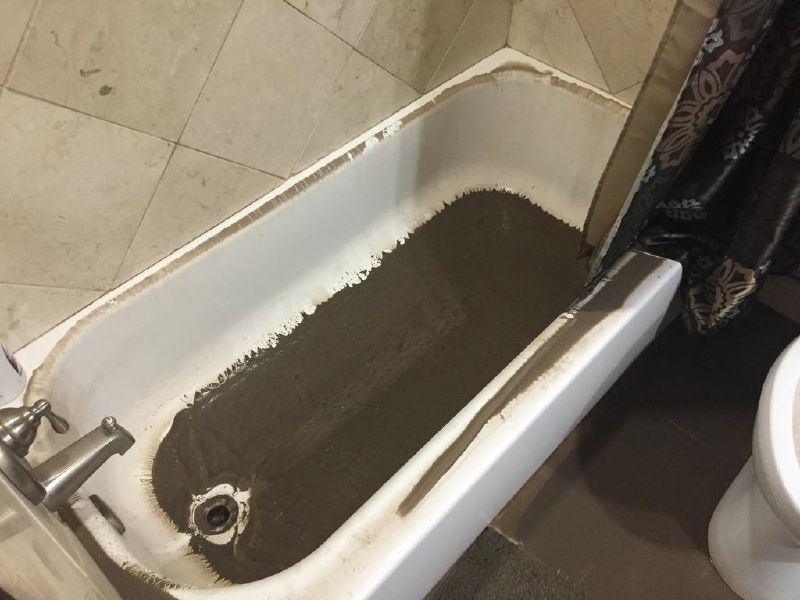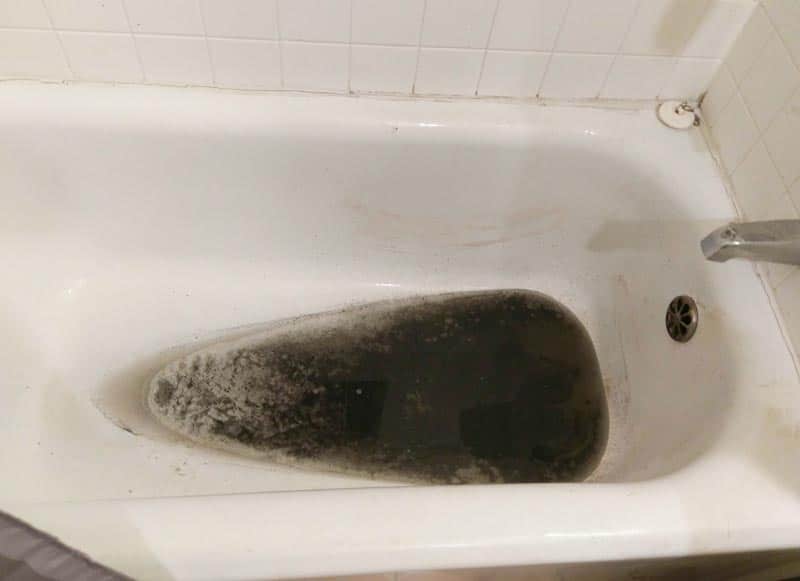Unveiling the Mystery of Discharge in the Bathtub
Unveiling the Mystery of Discharge in the Bathtub
Blog Article
We have unearthed the article pertaining to What to Do if Sewage Starts Coming Up Through Your Bathtub directly below on the internet and reckoned it made perfect sense to write about it with you on my blog.

Sewage backup in the tub can be a distressing and unhygienic trouble for any house owner. Not just is it troublesome, but it also presents serious wellness threats and shows underlying concerns with the plumbing system. Recognizing why sewage is coming up with the bathtub is crucial for taking ideal action to deal with the problem successfully.
Introduction to the Concern
Usual Reasons for Sewage Backup
Blockages in the Drain Line
Among one of the most usual root causes of sewage back-up is a blockage in the sewage system line. This can take place due to the buildup of particles, grease, or foreign items in the pipelines, avoiding appropriate flow and creating sewer to back up into your bathtub.
Tree Root Breach
Tree origins looking for moisture and nutrients can infiltrate drain lines through tiny fractures or joints. With time, these roots can grow and expand, creating significant damage to the pipes and causing sewer backup problems.
Recognizing the Issue
When sewage draws back up right into the bathtub, it's a clear sign of an issue with the drainage system. The wastewater that ought to be flowing away from your home is instead locating its way back right into your space, which can bring about considerable damages and health hazards.
Potential Causes
A number of variables can add to sewage backup in the bath tub. From clogs in the sewage system line to issues with the plumbing facilities, identifying the source is crucial for discovering a solution.
Aging Infrastructure
Older homes might have outdated plumbing systems that are extra prone to corrosion, splits, and degeneration. As pipes age, they come to be more susceptible to leakages and obstructions, increasing the probability of sewer back-up incidents.
Heavy Rainfall or Flooding
Throughout periods of heavy rainfall or flooding, the drain system may become overwhelmed with excess water, causing backups and overflows. This can result in sewage supporting into bathtubs and other components inside the home.
Signs of Sewage Backup
Foul Odors
Undesirable odors emanating from drains or fixtures, particularly in the restroom, might show sewer backup concerns. These odors are often strong and relentless, signaling a problem that needs immediate attention.
Slow Draining Fixtures
Bathtubs, sinks, and toilets that drain slowly or otherwise in any way could be experiencing sewer backup. If multiple fixtures are affected at the same time, it's most likely that the problem stems from a typical point, such as the major sewer line.
Gurgling Sounds
Odd gurgling or gurgling sounds originating from drains when water is running somewhere else in your house are a sign of air caught in the plumbing system. This air accumulation can arise from sewage backup and should be checked out immediately.
Health Threats Connected With Sewage Backup
Contamination of Supply Of Water
Sewage back-up can infect the water system in your home, presenting a severe wellness threat to you and your family members. Exposure to infected water can lead to stomach concerns, skin infections, and other health problems.
Mold Growth
Wetness from sewage back-up can create excellent conditions for mold development in your house. Mold spores can exacerbate breathing problems and trigger allergic reactions in delicate individuals, making prompt cleanup vital.
Spread of Condition
Sewer contains dangerous bacteria, viruses, and parasites that can cause a series of diseases, including hepatitis, cholera, and gastroenteritis. Entering contact with sewer or polluted surface areas places you in jeopardy of infection.
Tidying up After Sewage Backup
Sanitation Procedures
Extensively decontaminate and sanitize influenced areas after sewer backup to remove harmful microorganisms and avoid mold and mildew growth. Usage ideal cleaning products and safety equipment to ensure secure and reliable cleanup.
Remediation of Impacted Areas
Repair any damages to floor covering, walls, or components triggered by sewer back-up. Relying on the level of the damages, you may require to change carpets, drywall, or various other materials to restore your home to its pre-loss condition.
Immediate Actions to Take
Turning Off Supply Of Water
In case of sewage backup, it's important to turn off the water supply to avoid additional contamination and damages. Find the main water shutoff valve in your house and shut it off till the concern can be settled.
Calling a Specialist Plumber
Managing sewage backup is not a DIY job. Contact a qualified plumber with experience in taking care of sewage-related issues to examine the circumstance and carry out necessary repairs or cleanups.
Preventing Contact with Polluted Water
Until the sewage backup is settled, prevent contact with contaminated water to avoid the spread of germs and pathogens. Use safety equipment if you have to remain in the damaged area and wash your hands extensively later.
Safety nets
Regular Maintenance of Sewer Lines
Set up routine examinations and upkeep of your sewage system lines to recognize and attend to potential concerns prior to they escalate into major issues. This can consist of cleaning out particles, checking for tree origin invasion, and fixing any damaged pipelines.
Installing Backwater Shutoffs
Take into consideration setting up backwater valves in your plumbing system to prevent sewer from receding right into your home during durations of heavy rainfall or flooding. These shutoffs immediately close when water draws back up, protecting your building from contamination.
Proper Disposal of Family Waste
Avoid purging anything apart from bathroom tissue and human waste down the bathroom to avoid blockages and blockages in the sewer line. Dispose of oil, oil, and various other family chemicals properly to reduce the risk of plumbing problems.
Why Is Water Backing Up in My Bathtub When I Flush My Toilet?
What to do about a sewer line clog
First, don’t bother with plunging. No amount of plunging will dislodge the clog in a sewer line. The clog is too far away. Plungers are for clogs in the toilet itself, not the sewer line. Plus, the most likely causes of a sewer clog are:
Tree roots Flushed toys or feminine products Grease buildup Those items don’t move easily. And in the case of tree roots, the roots need to be cut out of the pipe and the pipe will need to be repaired.
You’ll need a closet auger. A closet auger is a type of plumber’s snake with a protective cover to keep from scratching the delicate porcelain toilet. If the clog is further down, you may need to remove the toilet or use one of your cleanouts to get to the clog.
We also recommend doing a video inspection of the drain to ensure that the cause of the clog has been completely removed. Otherwise, you could have the same problem again in a few days or weeks.
https://mspplumbingheatingair.com/blog/why-is-water-backing-up-in-my-bathtub-when-i-flush-my-toilet

I discovered that entry on Why is Sewage Backing Up Into My Bathtub? while doing a lookup on the web. So long as you enjoyed reading our post please remember to share it. I value your readership.
Call Today
Report this page